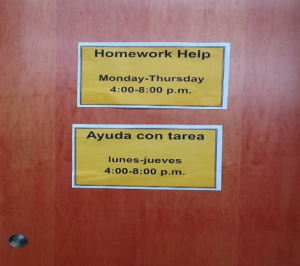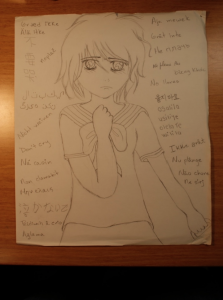This post is written by member Steven Alvarez. This is the first of two parts. Read the second part here.
In my book Community Literacies en Confianza: Learning from Bilingual After-School Programs, I focus on ethnographic case studies of two communities of students and families, the Kentucky United Latinos (KUL) and the Valle del Bluegrass Library (VBL). The communities were composed of emergent bilingual students and parents learning about schools as they learned English—in the case of VBL, students from preK to middle school, and for KUL, high school students. The two communities illustrated in two different contexts how emergent bilingual students and their families collectively navigated school systems and the English language with the help of after-school programs and their networks of members, teachers, and volunteers. I draw upon my experiences with KUL and VBL to create portraits of bilingual after-school communities that do this kind of work to offer relatable contexts that detail how schools and teachers can partner and draw from surrounding community learning. From these portraits, I explore what lessons we can draw from them that could impact how we teach writing in school. The focus on community puts the local knowledge and experiences of students and families in the forefront.
VBL had offered free after-school homework tutoring for emergent bilingual youths for over a decade. Located in a barrio of a small city in central Kentucky, the library mediated between the newly growing Latin American immigrant community in the area and local institutions, primarily local schools. VBL was the only bilingual public library in the state, and also the only one to offer after-school homework assistance, thanks in part to volunteer tutors and assistance from library staff. The homework assistance program served youth in grades K–8. Different VBL programs and events, however, were geared to preK, high school, and adult audiences.

Bilingual signs announcing homework help at VBL. The library was a valuable bilingual resource for the community.
The Kentucky United Latinos (KUL) after-school club formed in 2011 at a high school not too far away from the barrio where VBL stood. In fact, KUL often met at VBL since many students lived within walking distance of the library. Most of the KUL students had VBL library cards and had participated in the library’s programs when they were younger. With the coordinating assistance of teachers, KUL also partnered with a middle school to sponsor a mentorship program between students. KUL members met with middle school students to provide advice and guidance in English and Spanish to Latino/a students destined for their high school. KUL members encouraged the students to get involved in middle school activities and seek out ways to volunteer to help their communities. The KUL members noted the importance of making a strong academic start as a ninth grader, and how their community service prepared them for college and future internships.

High school student Bianca, with collaboration from the classmates in her ELL course at school, drew the artwork above entitled Don’t Cry. Bianca, a ninth grader, had migrated to Kentucky from Cuba earlier in the school year, and, since arriving, she had been a member of KUL. Bianca drew the figure and passed the drawing around to each of her classmates to write “don’t cry” in their home languages. Notice the rich linguistic diversity in her classroom.

Steven Alvarez is assistant professor of Writing, Rhetoric, and Digital Studies at the University of Kentucky. His research explores the languages and literacies of Latino immigrants in New York City and Kentucky.
To read more of Steven Alvarez’s works, please visit Translanguaging Literacies and Community Ethnographies.
Steven Alvarez recorded Confidence in Community Literacies: Bilingual Writers Reading the World, an On Demand Webinar for NCTE.


